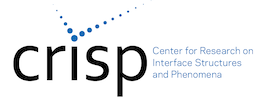Our kits are currently being reviewed and updated by a team of collaborative, innovative and interdisciplinary educators who wish to enhance the educational opportunities for students. These dedicated teachers are members of CRISP Collaborative Science for All (CCSA) as well as local educators.
Click to see the SCSU CRISP Module Template used by CCSA for improving and updating the CRISP demos and kits. Each kit page offers a CRISP developed teacher module and CRISP aligned standards (both NGSS and CCSS)
Kit Request form

The way a material behaves on the macroscale is affected by its structure on the nanoscale. Thin films can reflect light in special ways, because they’re only a few hundred nanometers thick—in the same size range as the wavelength of visible light.
Adapted from NanoDays Toolkits originally created for NISEnet via the NanoDays project
This material is based upon work supported by the National Science Foundation Award Numbers 0532536 and 0940143. Any opinions, findings, and conclusions expressed in this material are those of the authors and do not necessarily reflect the views of the National Science Foundation.
Subject(s):
Reflection, Structure-Property relationships, properties of materials
Objectives:
Students will understand that:
- The way a material behaves on the macroscale is affected by its structure on the nanoscale.
- The thin film reflects light differently depending on how thick it is, so you see different colors.
Materials in this kit:
- Shallow pan
- Strips of black paper
- Clear nail polish
- Permanent markers in metallic color
- Peacock feather (optional)
- Thin film solar cell sample (optional)
Suggestions for the Teacher:
Before you begin: fill the pans halfway with water and set up an area to let the strips of paper dry.
Black paper is used for this activity because it absorbs all visible light. The colors that appear are created by the interaction of light with the thin film.
Writing their name with the permanent marker helps visitors find their thin film later. The marker doesn’t make the colors appear on the black paper–that’s the thin film created by the nail polish.
Safety:
- Students should not ingest the chemicals.
- Students should wear gloves if handling chemicals.
- Do this activity in a well-ventilated area.
Additional Resources:
Thin Films Teacher Module
Thin Films CRISP aligned standards
Thin films student worksheet
Thin Films guide from NanoDays
NanoDays thin films website (great resources!)
STEM Careers:
Researcher
Optician
Materials Scientist
Optical Researcher
Materials Engineer
Standards:
MS-PS1 - Matter and its interactions
MS-PS4 - Waves and their applications in technologies for information transfer
HS-PS4 - Waves and their applications in technologies for information transfer
Concept 2- Cause and effect. Mechanism and explanation.
Practice 1 - Asking questions (for science) and defining problems (for engineering)
Practice 4 - Analyzing and interpreting data
